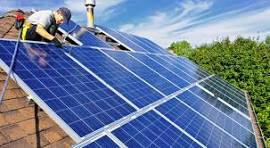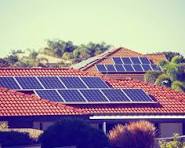Solar powered homes: The true cost savings of solar powered homes in Australia involves more than just the upfront price tag of the solar panels. While the initial investment may seem daunting, the long-term financial benefits and environmental advantages make solar energy an increasingly attractive option for homeowners across the country. While the initial investment can be significant, solar energy can provide long-term savings and increase the value of a home. In fact, with the cost of solar panels decreasing dramatically over the past decade, more and more Australians are making the switch to this clean and renewable source of energy.

Cost
The cost of solar panels in Australia has decreased dramatically over the past decade, making solar energy a more affordable option for homeowners. The average cost of solar panels in Australia is around $0.90 per watt, which means a typical residential solar panel system (around 5,000 watts) would cost approximately $4,500 before any rebates or incentives. This is a substantial decrease from just a few years ago, when the average cost per watt was over $2.00. The Australian government offers a Small-scale Renewable Energy Scheme (SRES) rebate for homeowners who install eligible solar panel systems, which can be up to $2,800 for a typical residential system. This rebate, combined with the falling cost of the technology itself, has made solar energy a much more accessible option for the average homeowner.
Rebates
In addition to the SRES rebate, some states and territories in Australia offer additional incentives for solar, such as rebates or interest-free loans. These regional incentives can further offset the upfront cost of going solar, making it an even more financially appealing option. Solar panels can save homeowners in Australia a significant amount on their electricity bills. A typical residential solar panel system can save homeowners between $400 and $1,100 per year on their electricity bills, depending on the system size, electricity usage, and location. Over the lifetime of the system, which is typically 25 years or more, these savings can really add up.

Home Value Increase
Solar panels also increase the value of a home in Australia. Solar panels can add up to $20,000 to a home’s resale value. This is a significant increase, and can be a major selling point for homeowners looking to attract potential buyers. The cost of solar panels varies by location in Australia, with installation costs typically being higher in remote areas than in cities. The quality of the equipment and the installer can also impact the total cost. It’s important for homeowners to do their research and choose a reputable installer to ensure they get a high-quality system that will perform well over its lifetime.
Low maintenance
Solar panels require little maintenance and can last for 25 years or more. Inverters, which convert the DC power from the solar panels into AC power for the home, typically need to be replaced after 10 to 15 years. Some homeowners in Australia choose to finance their solar panel system rather than pay cash upfront. Solar loans allow homeowners to spread the cost over 5 to 10 years, with interest rates typically ranging from 4% to 8%. Power purchase agreements (PPAs) are another option, where a third party owns the solar panel system and the homeowner pays for the electricity it produces. These financing options make it possible for even more homeowners to go solar, regardless of their upfront budget.
In conclusion, the true cost savings of solar powered homes in Australia involves balancing the upfront cost with the long-term savings and increased home value. Homeowners should consider their energy usage, budget, and local incentives when deciding if solar energy is right for them. With the cost of solar panels continuing to decrease, more and more homeowners in Australia are making the switch to solar. As the technology continues to improve and the financial benefits become even more clear, it’s likely that solar energy will become an increasingly common sight on rooftops across the country.